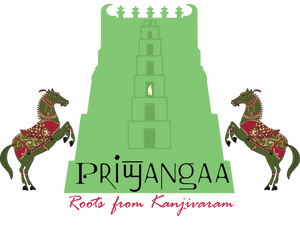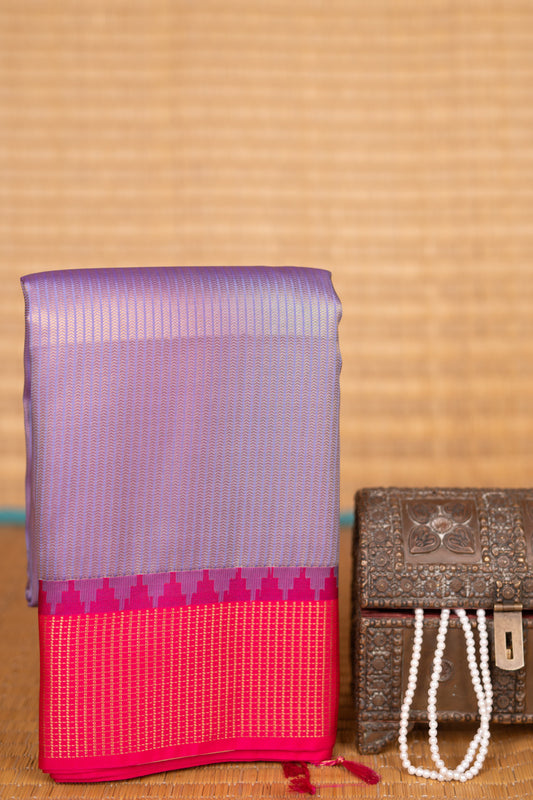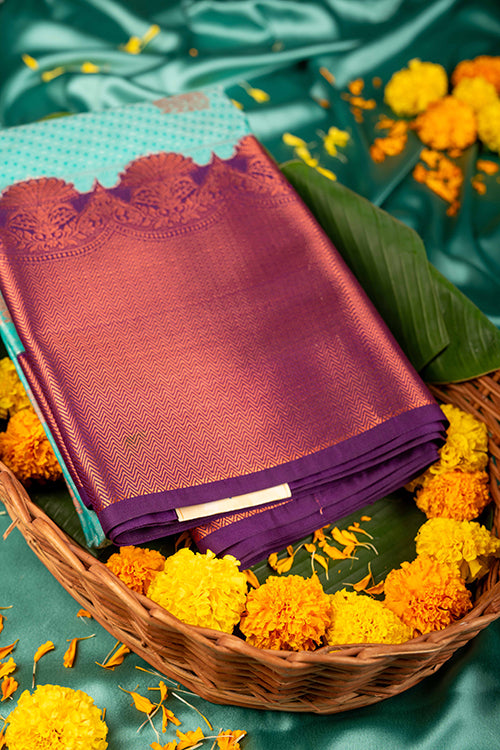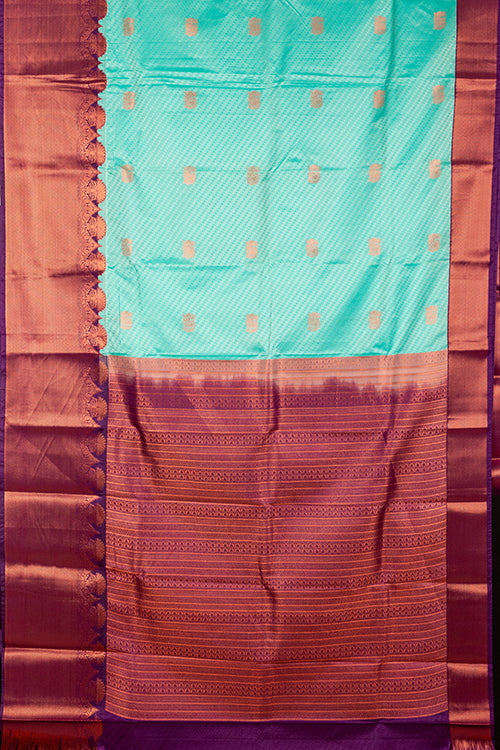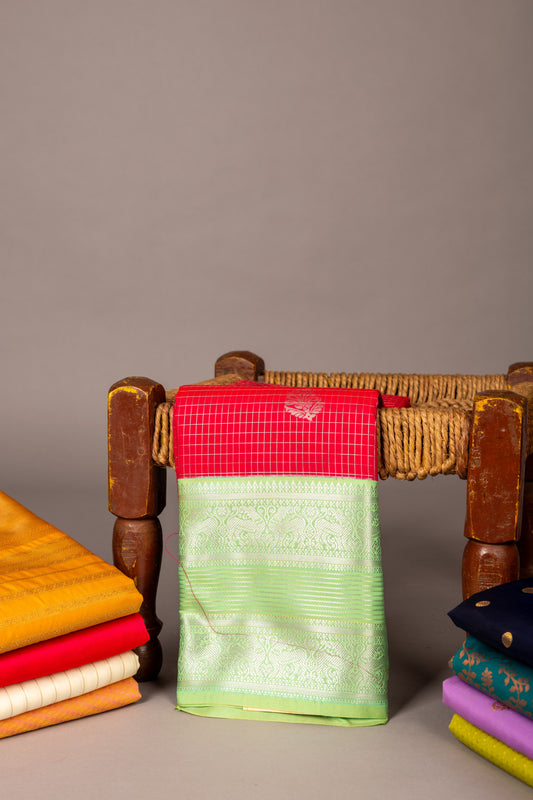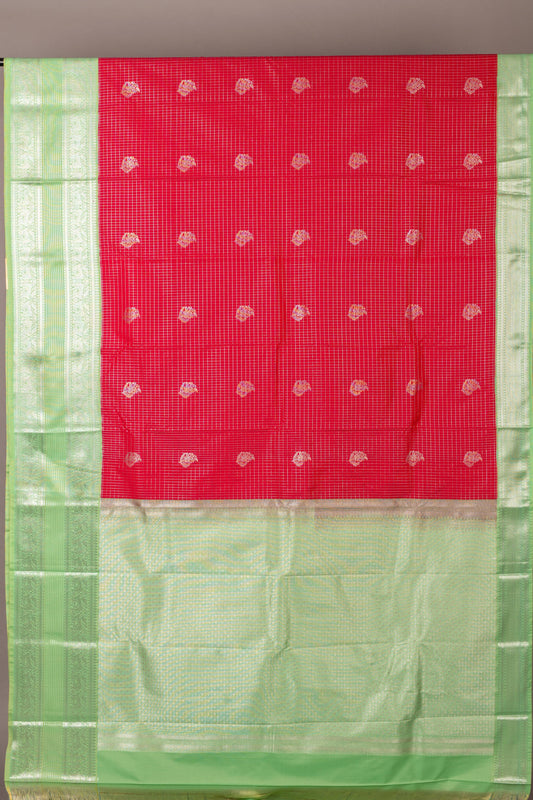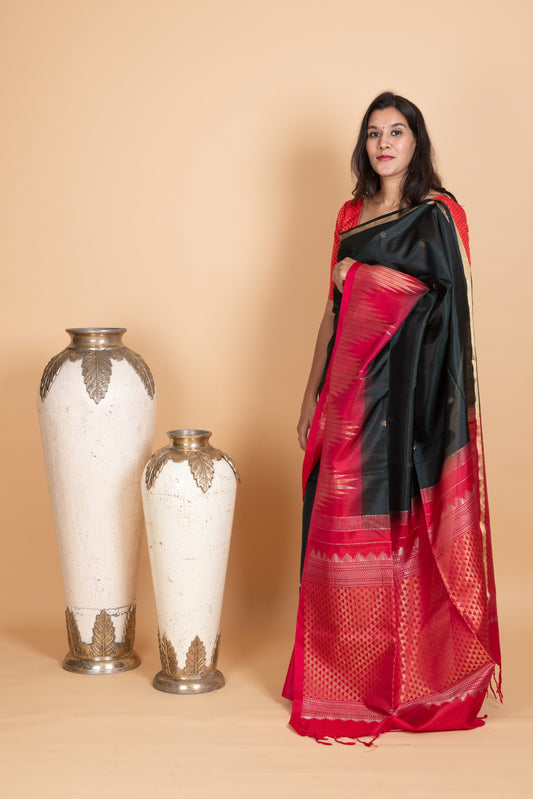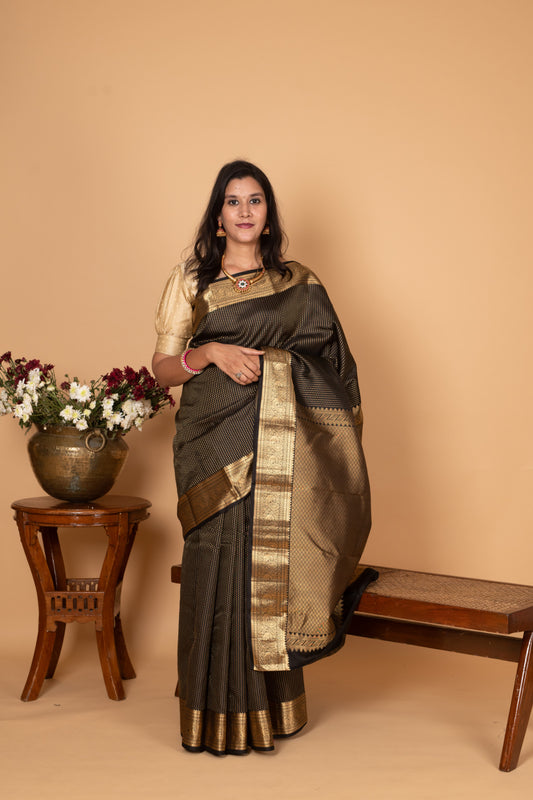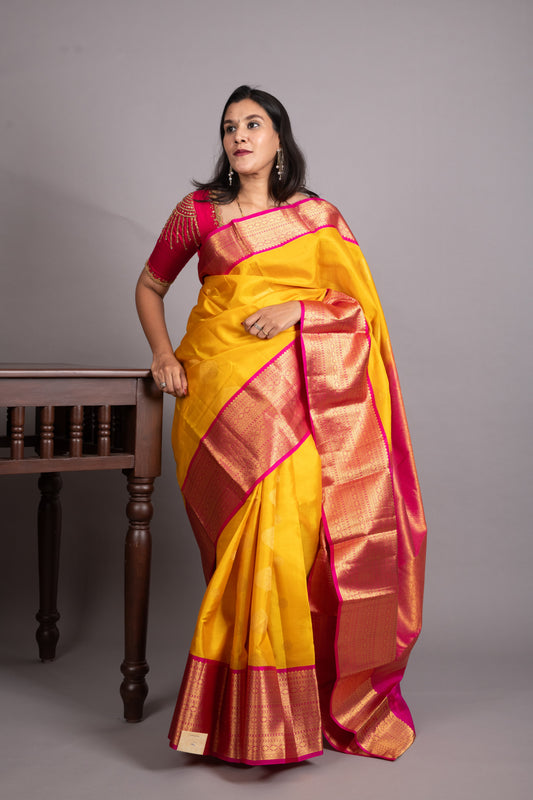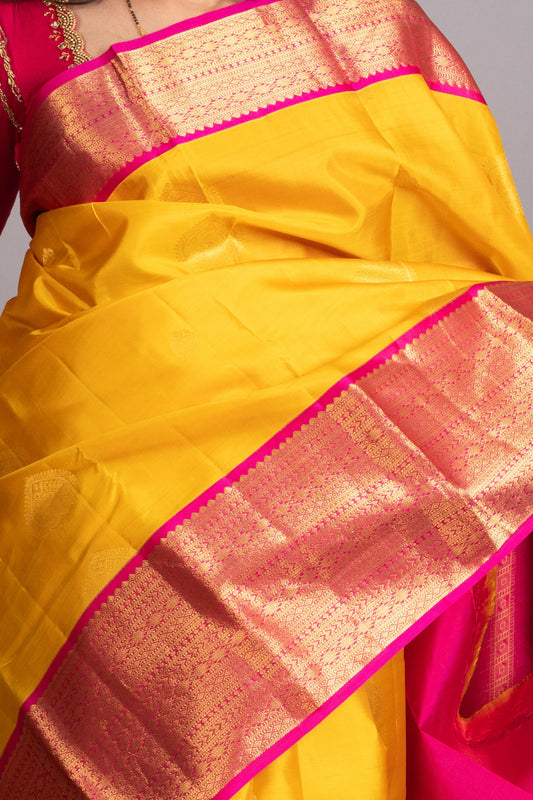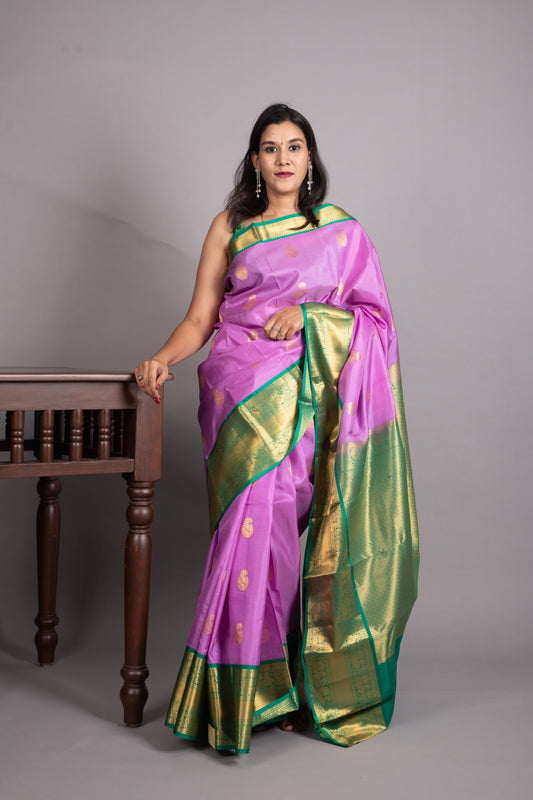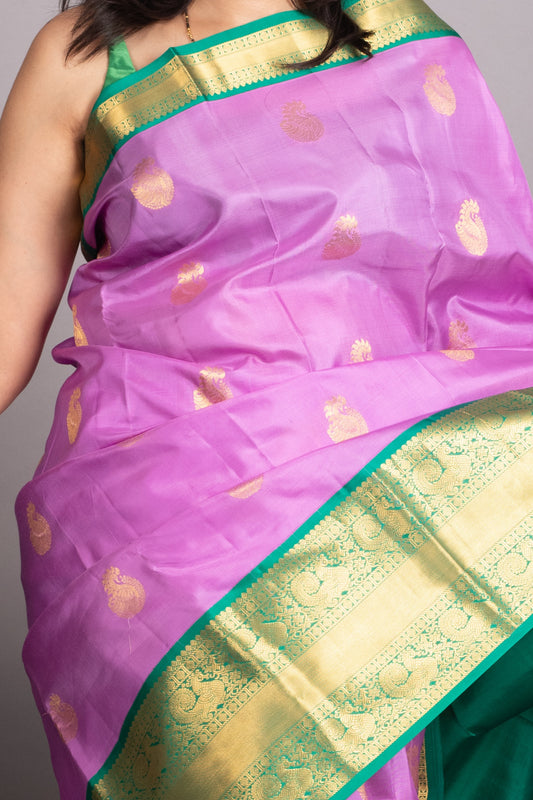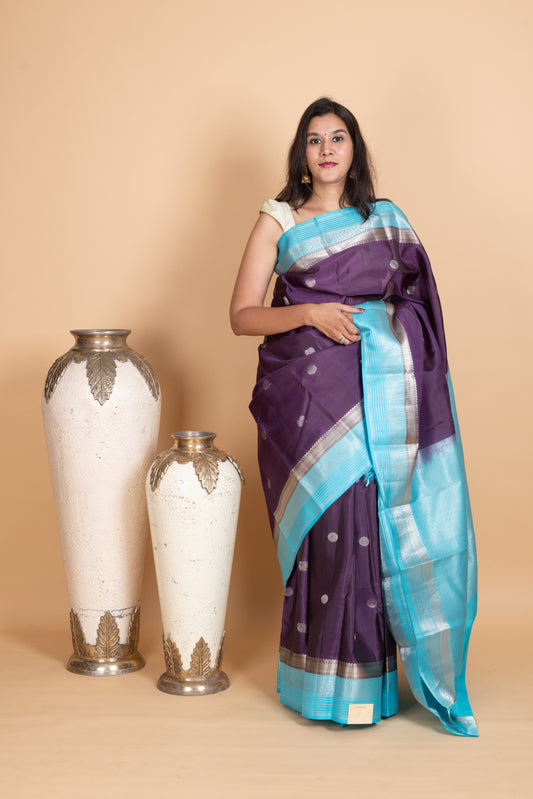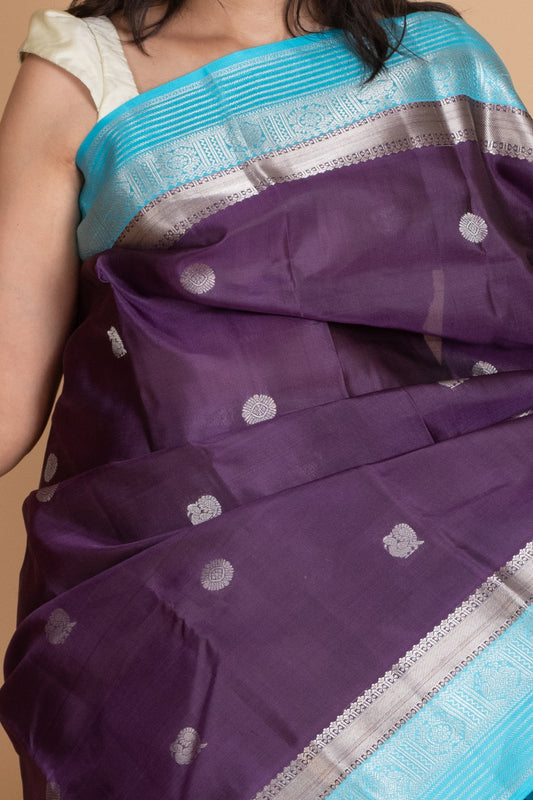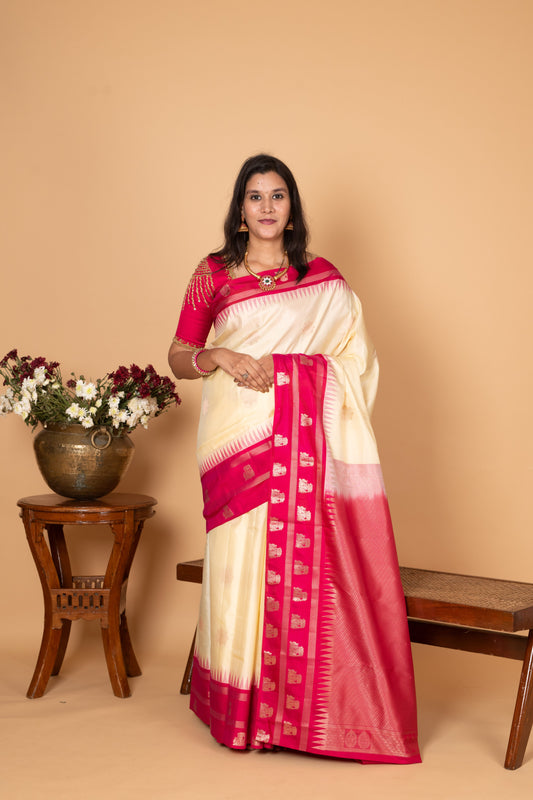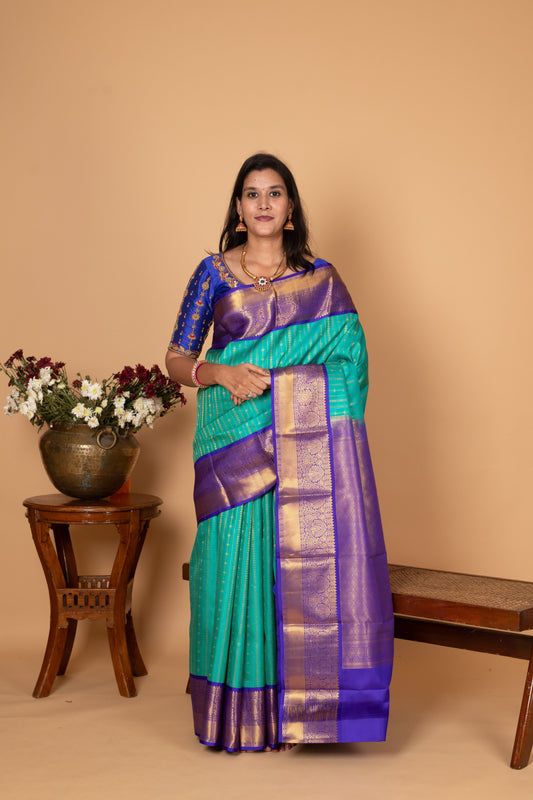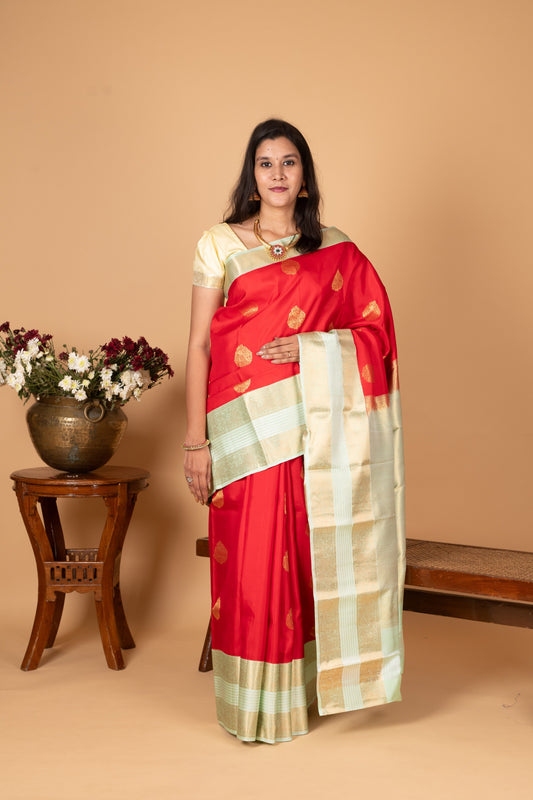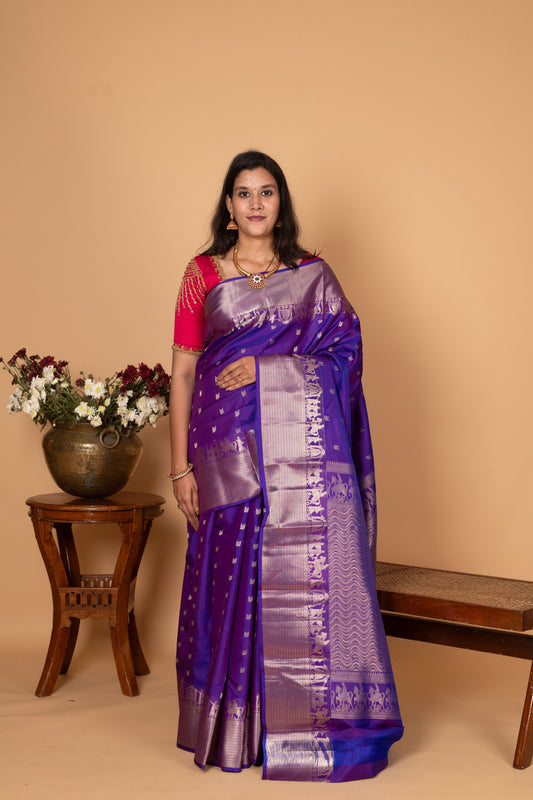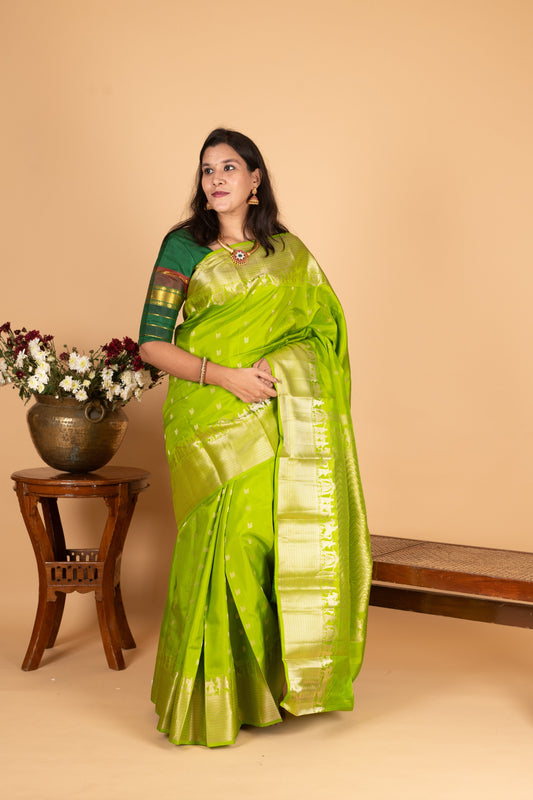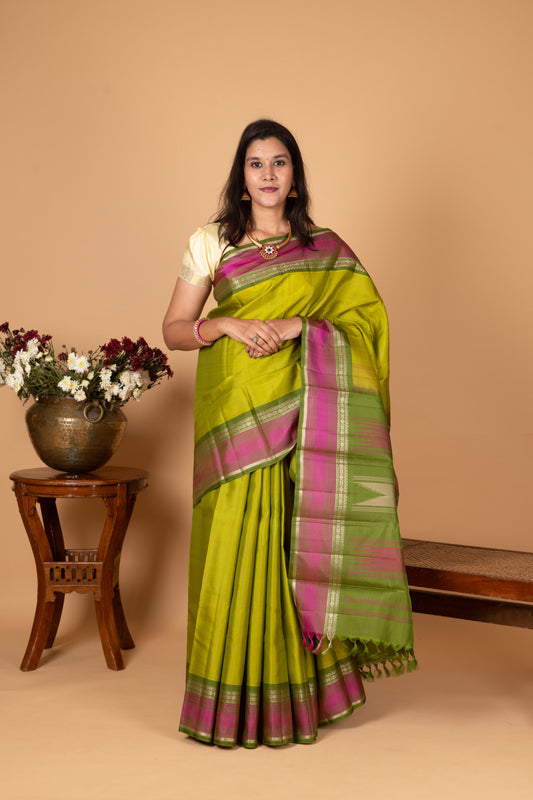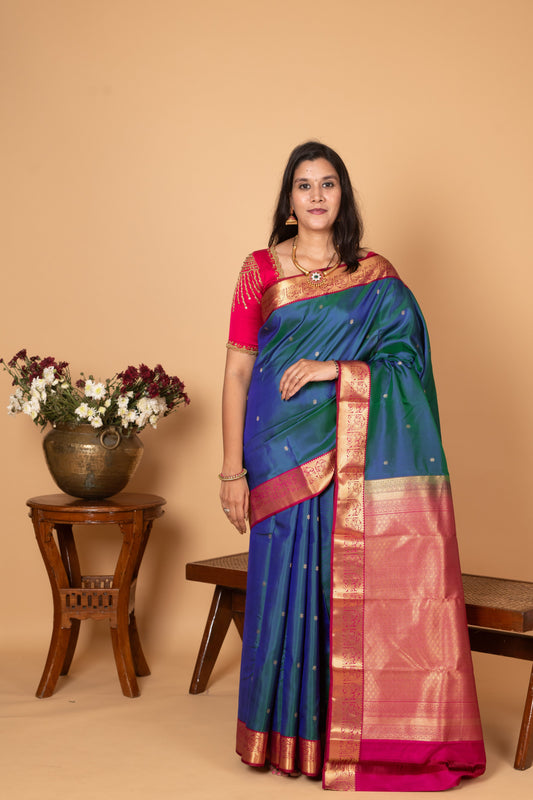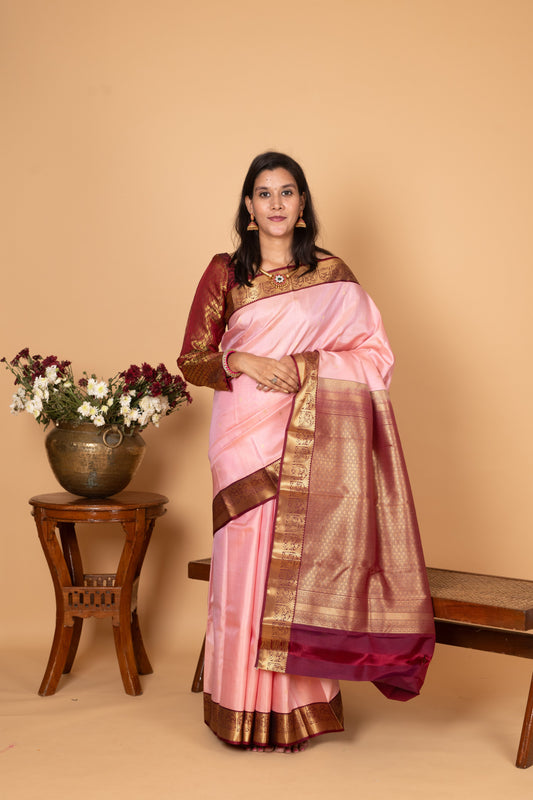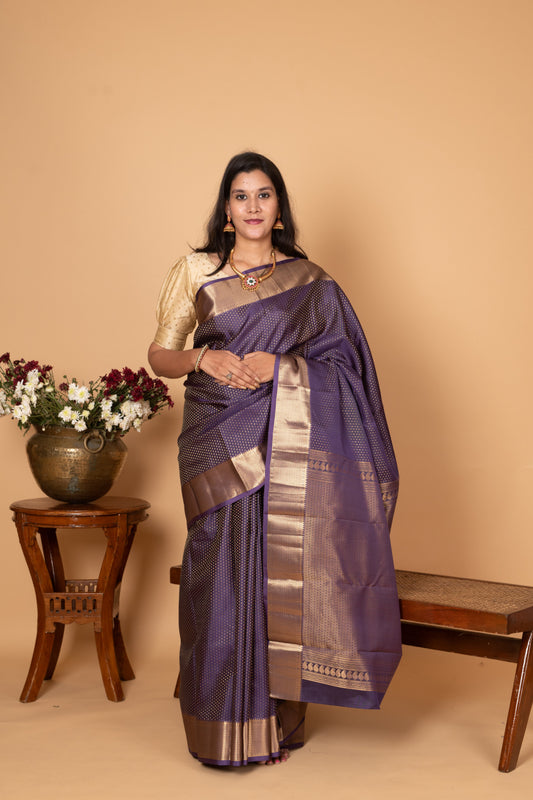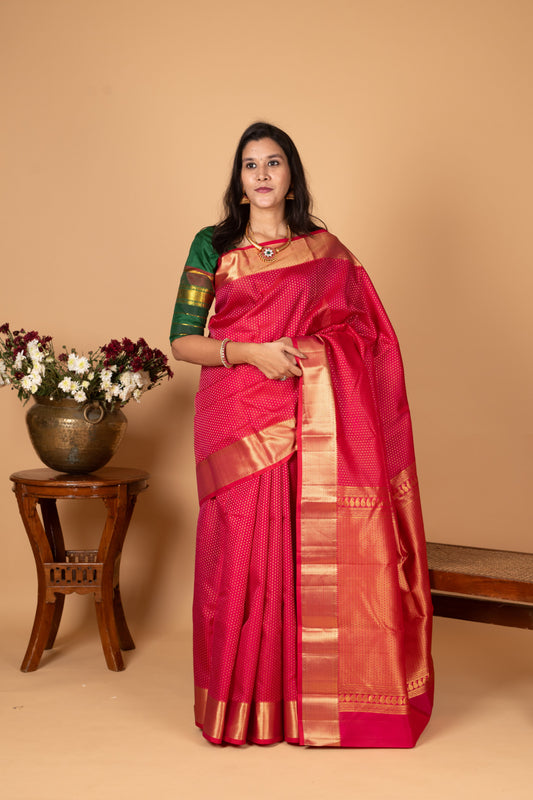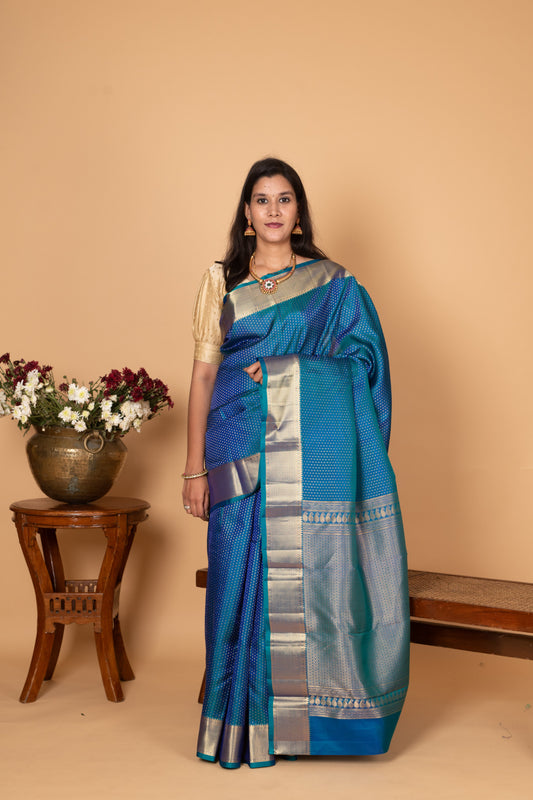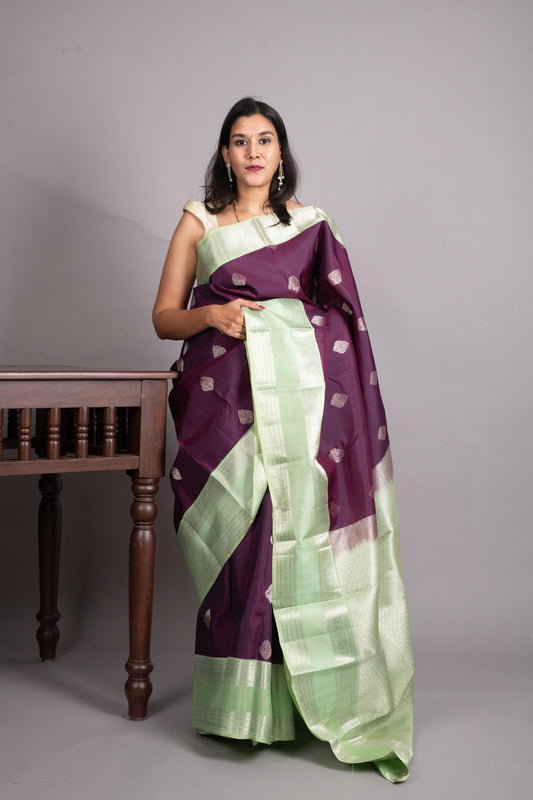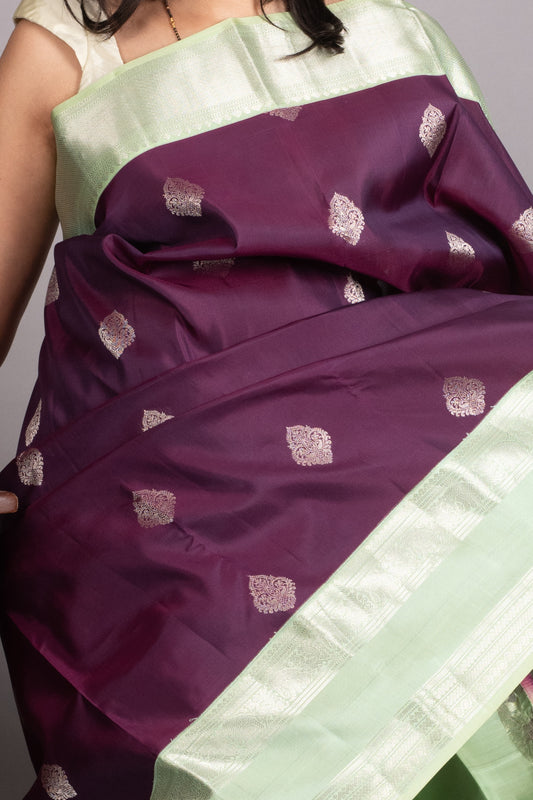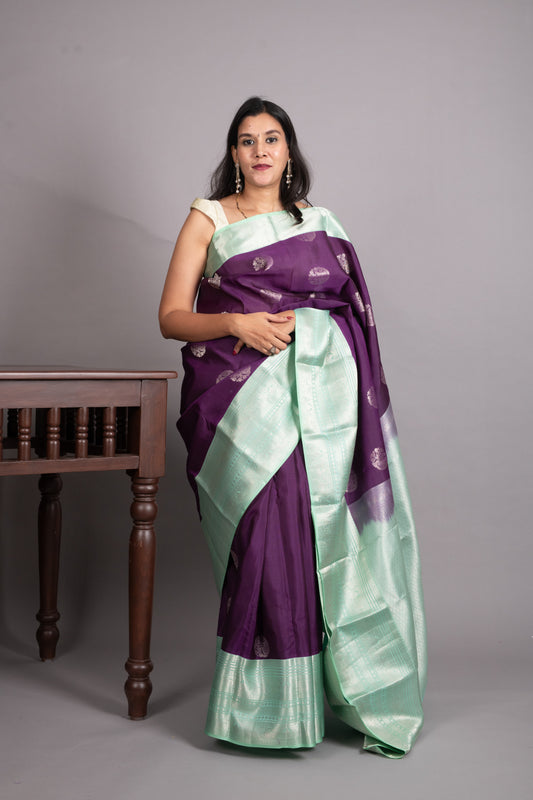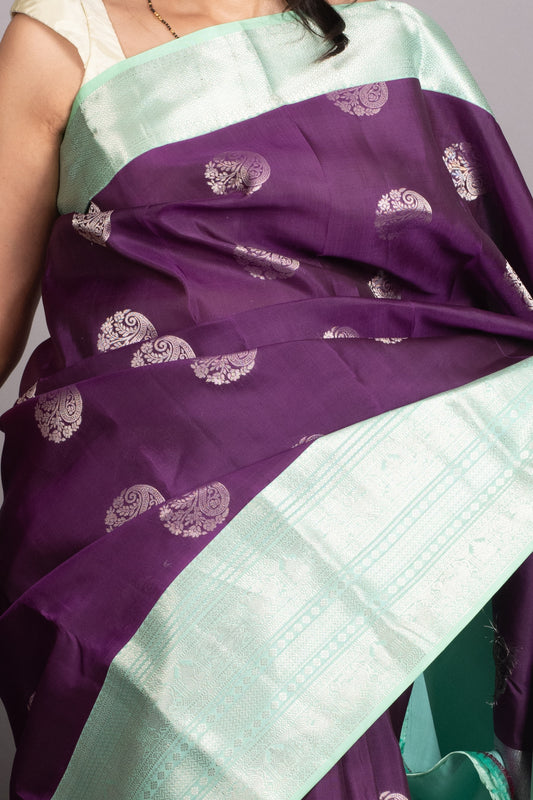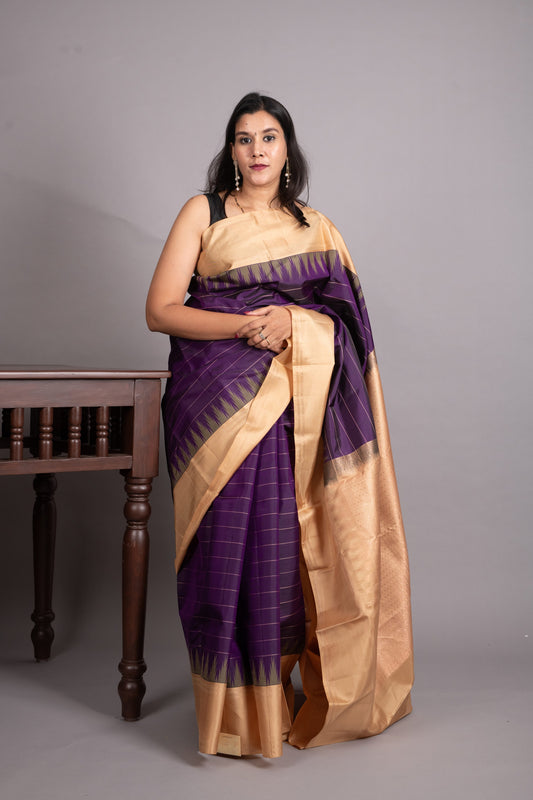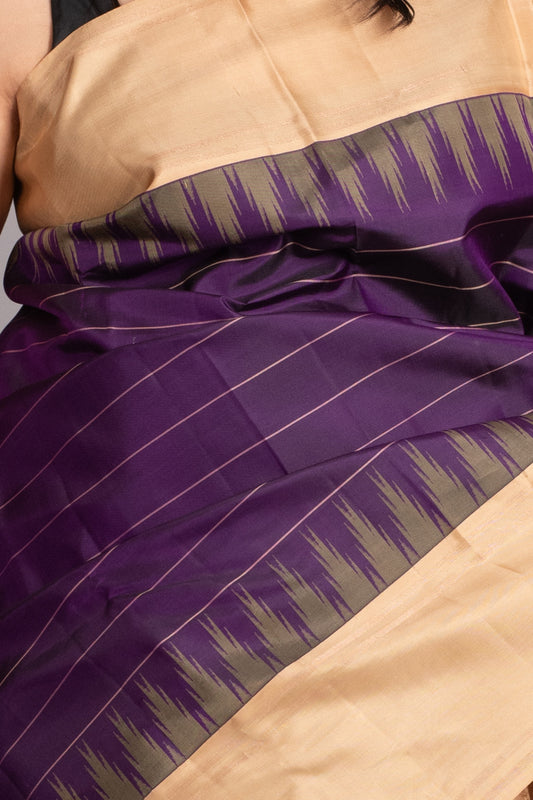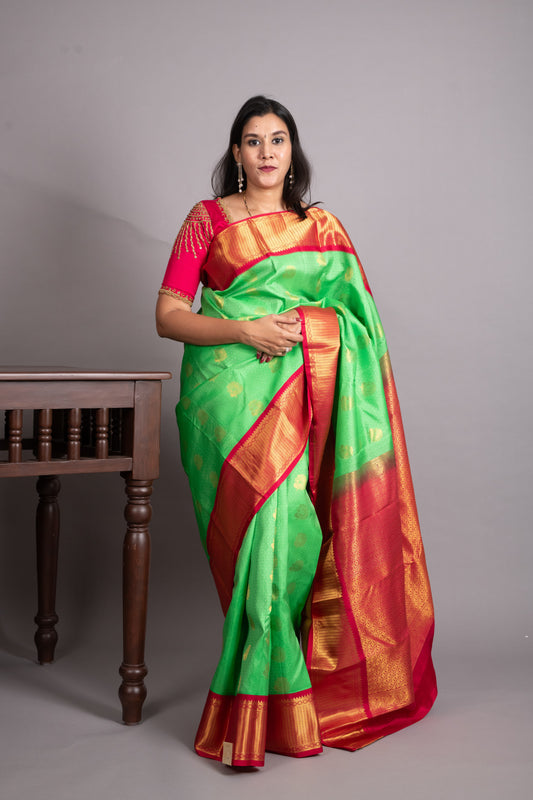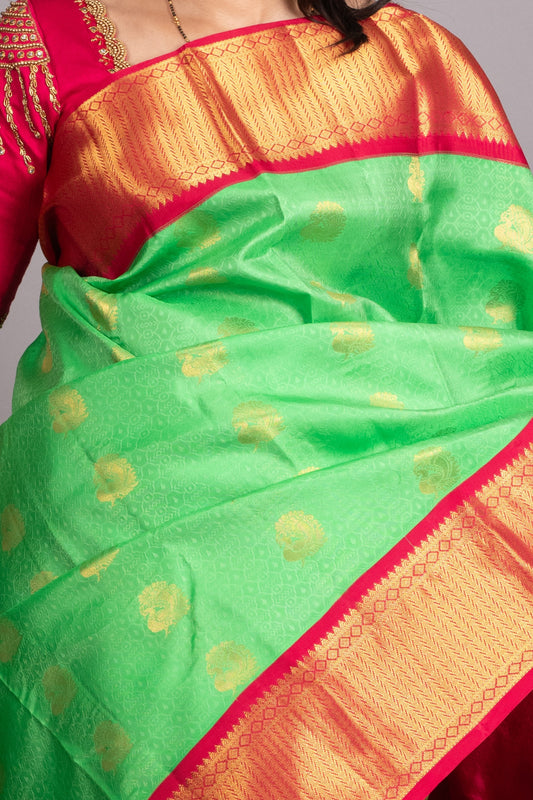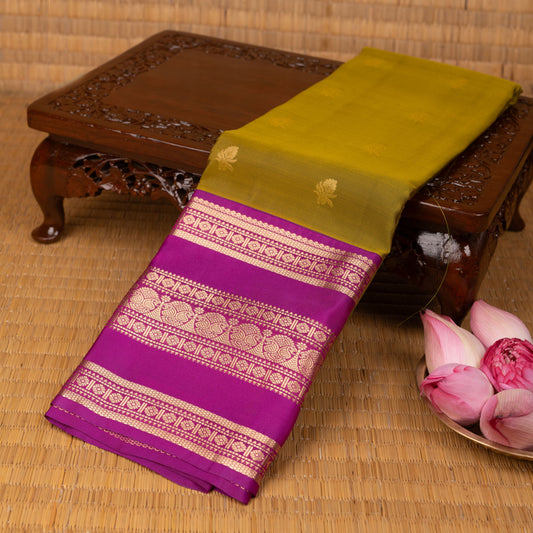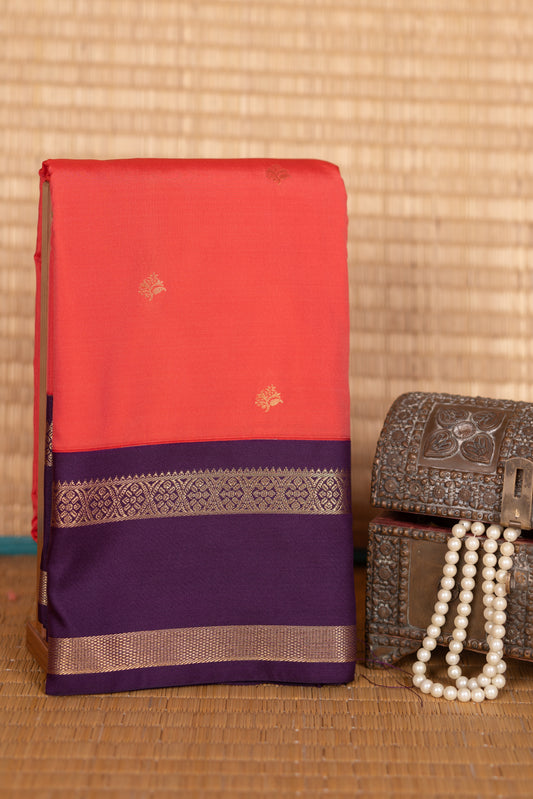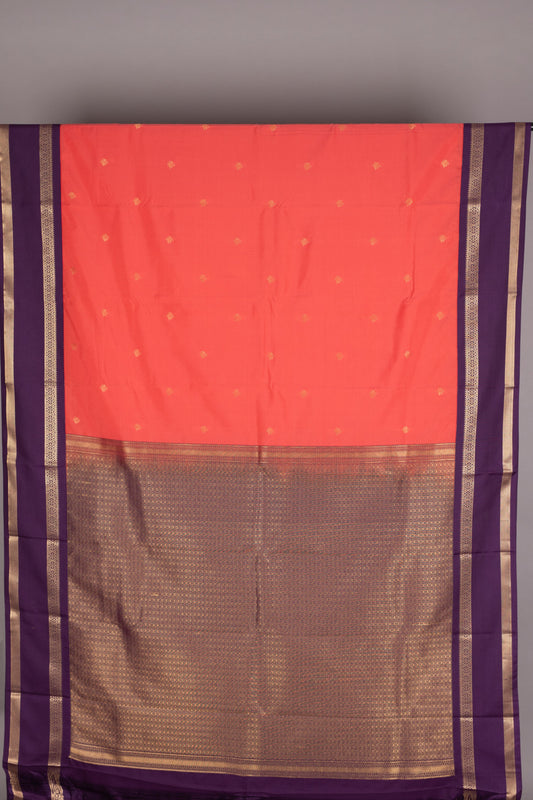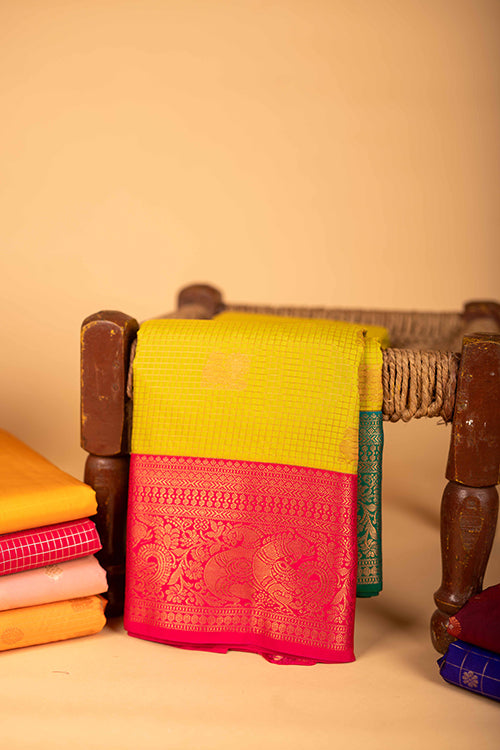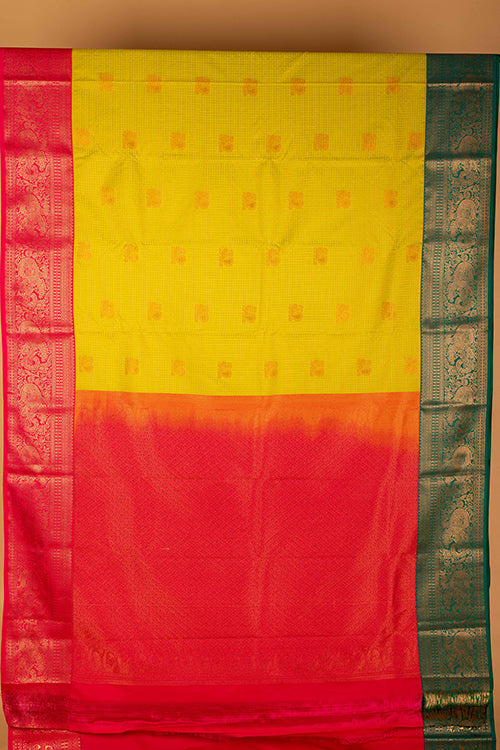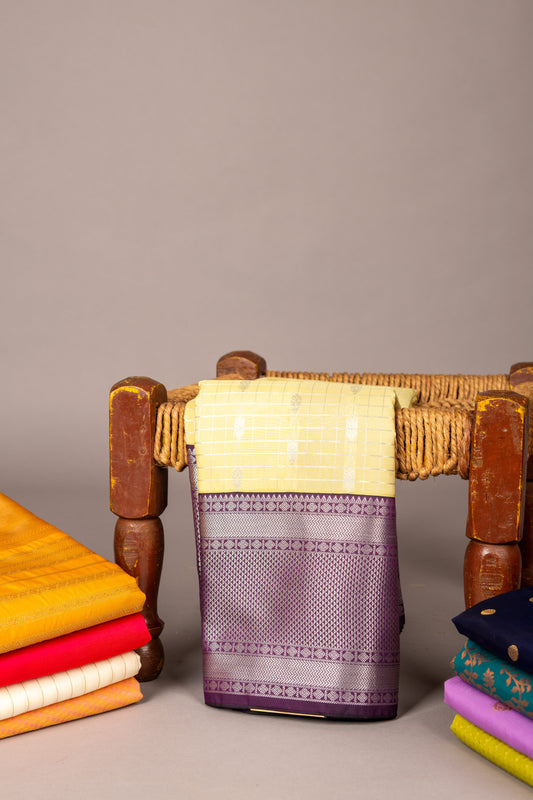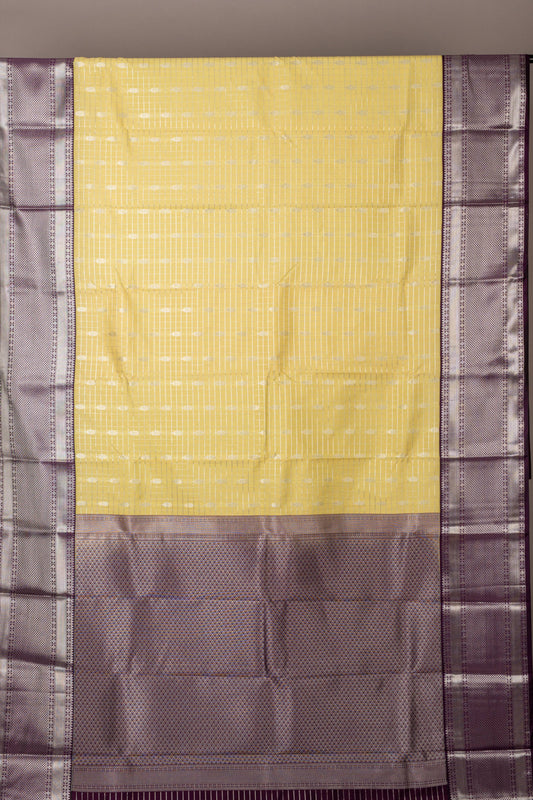Regarding wedding fashion, the saree has always held a special place in the hearts of millions. This iconic Indian attire symbolizes grace, tradition, and sheer elegance. Whether you are a bride, a bridesmaid, or a guest, choosing a saree for a wedding function is a decision that can make you look and feel like royalty. In this blog, we will explore the enduring charm of the saree and offer tips on selecting the perfect one for your next wedding celebration.
Significance of a Saree in Indian Weddings
The saree holds profound significance in Indian weddings and is considered more than just a piece of clothing. It symbolizes tradition, culture, and identity, playing a crucial role in various aspects of the wedding ceremony.
Here's a look at the significance of the saree in Indian weddings:
Cultural Heritage:
The saree is deeply rooted in India's cultural heritage and has been worn for thousands of years. It represents the rich and diverse history of the country, showcasing regional variations in weaving techniques, designs, and draping styles. Different regions of India have distinct saree traditions, such as Banarasi silk sarees from Varanasi, Kanjeevaram sarees from Tamil Nadu, and Bandhani sarees from Rajasthan.
Symbol of Feminity:
The saree is known for its grace and elegance, accentuating the wearer's beauty. In the context of a wedding, it symbolizes a woman's transition from her single life to married life. The transformation from a girl to a bride is marked by the donning of the bridal saree, which often signifies purity, modesty, and grace.
Bridal Attire:
The choice of saree is of utmost importance for brides. The bridal saree is often heavily adorned with intricate embroidery, zari work, and embellishments. The color of the saree, typically red or a vibrant hue, symbolizes love, passion, and fertility. Brides wear their saree with pride, and it becomes a focal point of the wedding ensemble.
Family Traditions:
Sarees are often passed down through generations as heirlooms. Many families have a tradition of gifting a special saree, sometimes called the "family saree," to the bride. This saree is sentimental and connects the bride to her family's heritage.
Rituals and Ceremonies:
The saree plays a pivotal role in various wedding rituals and ceremonies. During the 'Muhurtham' or wedding ceremony, her female relatives drape the bride in a saree, symbolizing their love and support. In some regions, the groom presents the bride with a saree during the ceremony.
Regional Significance:
Different regions of India have unique wedding customs and rituals related to the saree. For example, in South Indian weddings, the bride typically wears a nine-yard saree (madisar), while in North India, the saree is usually six to nine yards long. These regional variations add depth and diversity to the significance of the saree in Indian weddings.
The Versatility of Wedding Sarees
The versatility of wedding sarees is remarkable, making them an ideal choice for brides, bridesmaids, and guests alike. These exquisite garments offer a wide range of options in terms of fabrics, designs, colors, and draping styles, allowing individuals to express their unique style while adhering to the grandeur of a wedding celebration.
Here's a closer look at the versatility of wedding sarees:
Variety of Fabrics:
Wedding sarees are available in various fabrics to suit different seasons and occasions. Some popular options include:
Silk Sarees:
Luxurious and regal, silk sarees like Kanjeevaram and Banarasi are classic choices for bridal wear. They exude luxury and are perfect for traditional ceremonies.
Georgette and Chiffon Sarees:
Lightweight and flowy, georgette and chiffon sarees are ideal for summer weddings and outdoor functions. They offer comfort and elegance.
Net Sarees:
Net sarees come with delicate and intricate work, making them a glamorous choice for evening receptions and cocktail parties.
Cotton Sarees:
Perfect for daytime weddings or mehendi functions, cotton sarees are breathable and comfortable. They often feature bright colors and lively prints.
Color Palette:
Wedding sarees are available in a wide range of colors, allowing individuals to choose hues that resonate with their personal preferences and the theme of the wedding. While red and maroon are traditional choices for brides, contemporary brides are experimenting with pastels, gold, and even unconventional shades like lavender and mint.
Embellishments and Designs:
The versatility of wedding sarees is further enhanced by the diverse range of embellishments and designs. There is a saree design for every occasion, from intricate zari work and heavy embroidery for grand ceremonies to subtle threadwork and stone embellishments for semi-formal events.
Bridesmaids and Guests:
Wedding sarees are not exclusive to the bride. Bridesmaids and guests can also embrace the versatility of sarees to complement the wedding theme and the bride's attire. Bridesmaids can coordinate their sarees while adding their flair, and guests can choose sarees based on the event's formality.

Draping Styles of Wedding Sarees
The draping style of a wedding saree plays a crucial role in defining the overall look of the bride or wearer. Different regions in India have unique draping styles, each of which can convey a distinct cultural and aesthetic appeal. Here are some of the most popular draping styles of wedding sarees.
Nivi Style:
Originating from Andhra Pradesh, the Nivi style is one of sarees' most widely adopted draping methods. The pallu (the decorative end of the saree) is neatly pleated and draped over the left shoulder. This style provides an elegant and classic look and is often chosen by brides for its timeless appeal.
Bengali Style:
The Bengali saree drape is characterized by its box-pleated pallu, usually draped from right to left, with the free end pulled over the left shoulder. This style is known for its distinct look, with the pallu showcasing intricate designs or embroidery. Bengali brides often choose this drape for its cultural significance and regal appearance.
Gujarati Style:
The Gujarati saree drape is recognized by its front pallu style. The pallu is draped from the back and brought around the right side to the front, creating a unique and visually appealing look. This style is popular for its grace and is often worn during Garba dances and other festivals in Gujarat.
Maharashtrian Style:
The Maharashtrian saree drape, known as the Nauvari saree, is characterized by its length and the distinctive way it is draped. The saree is tucked in multiple layers to create a trouser-like appearance, and the pallu is draped over the left shoulder. This practical style allows for ease of movement, making it a favorite choice for dancers during Lavani performances.
Tamilian Style:
Tamil Nadu's traditional saree drape involves pleating the saree on the right side and bringing the pallu over the left shoulder. The pleats are typically larger and broader than in other styles, and the pallu is often showcased with intricate motifs. South Indian brides often opt for this style, especially when wearing Kanchipuram sarees.
Lehenga Style:
The Lehenga saree drape is a fusion style that combines the look of a lehenga with a saree. The saree is pre-pleated and stitched to resemble a lehenga skirt with a dupatta-style pallu. This style is gaining popularity among modern brides for its convenience and unique appearance.
Contemporary and Innovative Styles:
With evolving fashion trends, contemporary draping styles have emerged. These may involve experimenting with the pallu, draping it as a cape, or incorporating belts to accentuate the waist. Designers often create new draping styles to provide a fresh and modern twist to traditional sarees, making them suitable for various occasions.
Conclusion
Trends come and go in fashion, but the saree remains an eternal favorite. It's not just an attire; it's a piece of art that has been cherished for centuries. So, the next time you're invited to a wedding function, consider adorning yourself in a stunning saree. With the right choice of color, fabric, and accessories, you'll look beautiful and feel a deep connection to the rich tapestry of Indian culture. Embrace the elegance of the saree and be a part of a timeless tradition that transcends generations.
Shop Now
Grape and Sky Blue Kanjivaram Pattu Saree
- Rs. 11,900.00
Rs. 11,900.00- Rs. 11,900.00
- (-0%)
- Unit price
- / per
Olive green and Purple Pure Touch silk saree
- Rs. 6,950.00
Rs. 6,950.00- Rs. 6,950.00
- (-0%)
- Unit price
- / per
Pinkish Red and Purple semi silk saree
- Rs. 2,650.00
Rs. 2,650.00- Rs. 2,650.00
- (-0%)
- Unit price
- / per
Lime green and pink semi silk saree
- Rs. 3,420.00
Rs. 3,600.00- Rs. 3,420.00
- (-5%)
- Unit price
- / per
Offwhite and purple semi silk saree
- Rs. 2,950.00
Rs. 2,950.00- Rs. 2,950.00
- (-0%)
- Unit price
- / per
